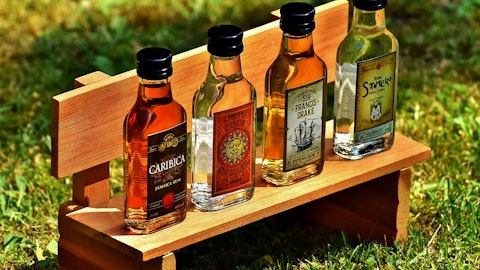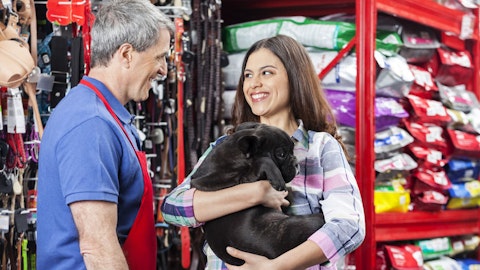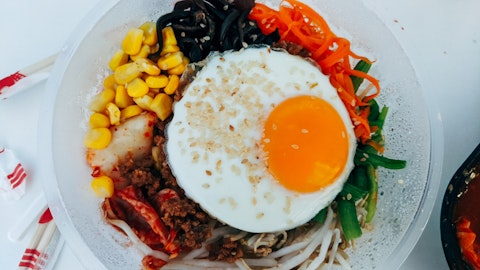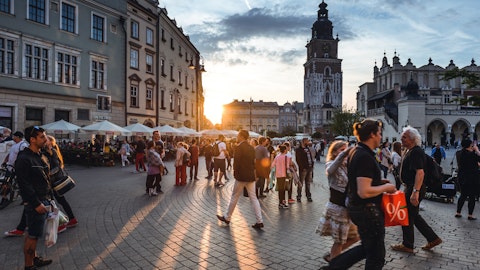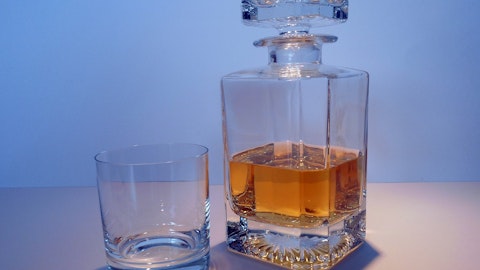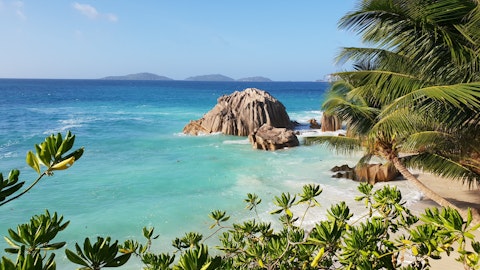In this article, we are going to discuss the 15 African countries with the most alcohol consumption. You can skip our detailed analysis of the next big alcohol market, the impact of Covid on the African alcohol industry, and the rampant illicit alcohol trade in Africa, and go directly to 5 African Countries with the Most Alcohol Consumption.
Given the relative lack of archaeological work in sub-Saharan Africa, the evidence for the ancient consumption of fermented drinks on the continent is thin, but the earliest records, in combination with ethnographic research, point to a very long history and ubiquity of fermented beverages. Virtually every African society produced one or more kinds of fermented drinks, whether it was palm wine in coastal regions, various wines made from honey or local fruits such as bananas, or, especially, beers produced from millet and sorghum and later maize. In Muslim societies, these fermented drinks, often classified as foods by local people, were not seen to violate Qurʾanic prohibition.
Alcohol consumption has been among the most important leisure activities in many African societies, and in the 20th century, drinking establishments emerged as very important sites of popular culture.
The Next Big Alcohol Market:
Africa is home to 16% of the world’s population but consumes just 5% of the world’s beverage alcohol. That low per capita consumption translates into considerable potential. The continent’s hot climate is expected to exaggerate the demand for beer and big brewers are investing for the future.
With the acquisition of the South African Distell group by Heineken in 2021, there is a three-way tussle over control of Africa’s alcoholic drinks industry between Diageo plc (NYSE:DEO), Heineken N.V., and Anheuser-Busch InBev SA/NV (NYSE:BUD). The acquisition of SABMiller by AbInBev in 2016 helped increase the beer footprint on the continent. However, Heineken’s takeover of Distell, which has an established stronghold in categories like cider, spirits, and wine shows that the fight is not limited to just beer.
Anheuser-Busch InBev SA/NV (NYSE:BUD) has also continued to invest in the continent and inaugurated a new $180 million brewery in Mozambique in 2021, where the beer market has increased by almost 30% in the last few years. The beer behemoth has also announced the construction of a new site in Tanzania, where beer volumes have also jumped by 21% in the last decade.
Nigeria in particular is seen as a ‘hidden jewel’ by Anheuser-Busch InBev SA/NV (NYSE:BUD) and this justified a new $250m brewery which came on stream in 2017. The company also announced plans earlier this year to invest another $230 million to upgrade and expand its operations in South Africa.
Anheuser-Busch InBev SA/NV (NYSE:BUD) has been facing some headwinds in the U.S. market after the recent controversy regarding its best-selling brand Bud Light, which resulted in the iconic brand losing its crown as the Top-Selling Beer in America after nearly two decades. Though as we mentioned in our article – 17 Countries with the Highest Percentage of Non-Drinkers – billionaire Bill Gates’ portfolio managers decided to initiate a $96 million position in Anheuser-Busch during the second quarter.
The Impact of Covid on the Alcohol Industry:
The pandemic proved especially difficult for alcohol producers in Africa. Diageo Plc (NYSE:DEO) said that 75% of its alcohol revenue in Africa came from drinking establishments and restaurants before the lockdowns. So when the spread of Covid-19 kept patrons away from crowded social settings, consumers didn’t readily shift to at-home drinking.
As sales missed expectations, the industry responded by trying to get Africans to warm to the idea of buying booze for home consumption. It wasn’t easy as most people associate alcohol with hanging out at a local watering hole or storefront, where there are usually tables and chairs. Advertising also proved a challenge, because a lot of marketing had been targeted at customers of those very same bars and restaurants that were now empty.
Enter paid influencers like Julia ‘Jules’ Gaitho. Her Instagram account boasts 133,000 followers and is filled with posts about Gordon’s, a Diageo gin brand. There are photos of her sipping a cocktail on a patio and a park bench. In one video, she shows off her mixology skills, pouring ice cubes, gin, ginger ale, cranberry juice, and raspberries into a glass to make a red Gordon’s Ruby Cooler cocktail at home, then inviting her followers to re-create a similar drink.
Social media influencing had been around for more than a decade, but in Africa, it hadn’t become as popular a marketing tool. Many big brands still focused on entertainers or sports stars to pitch their quaffs, or they bought television ads and billboard space. The pandemic upended that strategy. Hours spent online surged as people avoided away-from-home gatherings or observed curfews, and to capture the attention of the continent’s young, rising middle class, alcohol brands poured resources into social media. Soon influencers were being paid to promote big booze brands and the pleasures of drinking away from a bar or club.
The shift to influencer marketing helped boost alcohol consumption outside drinking establishments by 22% in 2020, dwarfing the 2.3% rise recorded in 2019. Since the start of the pandemic, Diageo plc has more than doubled its spending on digital media advertising in East Africa, helping it reach more people without relying on expensive media such as television.
Diageo plc (NYSE:DEO) has enjoyed a strong presence in the African market since it opened its first Guinness brewery in the early 1960s in Nigeria, and its progress in the continent is underpinned by a broad price range of brands which cater for a wide range of incomes. The spirit giant’s operations in Africa accounted for 10% of its overall revenue of $17.1 billion in its last fiscal year.
Diageo plc (NYSE:DEO) ranks among the 12 Best Alcohol Stocks to Own According to Hedge Funds.
The Illicit Alcohol Trade in Africa:
The illicit spirits segment retains a strong presence in Africa, mainly due to its availability, affordability, and lack of government regulations. This not only results in considerable health risks for the consumers but also billions of dollars in losses for the respective governments. According to a study, one-third of the entire African alcohol market was occupied by the illicit trade in 2017.
The situation is especially bad in Uganda, which ranks among the Top Alcohol Drinking Countries in the World. According to Euromonitor, 64.5% of the alcoholic drinks in the Ugandan market are illegal and lack standards that are fit for consumption. The report also noted that 45.4% of the consumed illicit liquors are homemade, popularly known as waragi, which presents significant hazards to human health, especially in rural areas. The value of the illicit alcoholic drinks was estimated to be $1.91 billion between 2017 and 2020, causing tax revenue losses of $458 million for the government during the time period.
The Ugandan government banned sachet spirits in 2019 as a way to eliminate unregulated alcohol from the market, but it had little effect. The East African country still remains a hotbed for illicit alcohol trade since manufacturers have now shifted to packaging such drinks in pet bottles, recycled mineral water bottles, and other types of containers that are sold openly countrywide.
With that said, here are the Countries that Drink the Most in Africa.
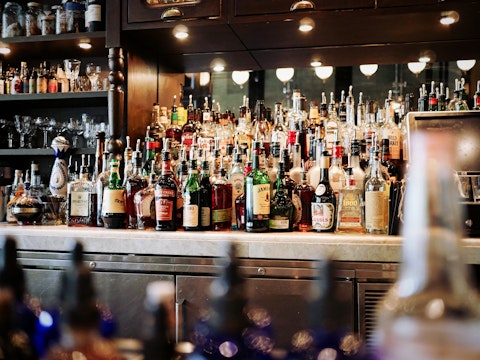
Pixabay/Public Domain
Methodology:
To collect information for this article, we have referred to The Global Health Observatory of the World Health Organization, looking for Countries that Consume the Most Alcohol in Africa. The following countries have ranked by their annual per capita consumption of pure alcohol in 2019, for people aged 15 and over.
One thing to keep in mind is that just because the people in these countries generally consume high levels of alcohol, it doesn’t necessarily mean that they’re drunkards. Alcohol is simply an essential part of many cultures around the world and alcoholic beverages play an important role in important events and celebrations, since they can be associated with many festivals and rituals.
15. Angola
Per Capita Consumption of Alcohol: 6.17 liters
As a fast-growing economy, Angola is experiencing a booming alcohol industry. Beer is the Central African nation’s favorite tipple and on average each Angolan consumes about 59 liters of it a year. The country also has a well-established wine drinking culture and is one of the largest markets on the continent for wine and spirits. However, given the high levels of poverty, branded products are regarded as a luxury purchase and there is a significant informal trade in liquor and non-alcoholic beverages.
Angola is among the African Countries with the Highest Alcohol Consumption.
14. Cape Verde
Per Capita Consumption of Alcohol: 6.27 liters
The national liquor of Cape Verde is Grogue – a distilled sugar cane liquor with an alcohol percentage of over 40%. The tradition of making and consuming this rum is deeply rooted in the country’s culture.
The Cape Verde Parliament approved a new law in 2019, which prohibited the consumption and sale of beverages to children under 18 years and the establishments that sell them within 200 meters of schools.
13. Congo
Per Capita Consumption of Alcohol: 6.4 liters
Alcohol consumption has been rampant in the Republic of Congo mainly because of the non-existence of a regulatory framework for alcohol, no minimum drinking age, no limitations on the sale or advertising of alcohol, and low taxes on alcoholic products.
Congo sits among the Top Alcohol Consuming Countries in Africa.
12. Equatorial Guinea
Per Capita Consumption of Alcohol: 6.94 liters
Equatorial Guinea is a Central African country comprising the Rio Muni mainland and 5 volcanic offshore islands. Malamba juice (a local sugar cane brew), palm wine, and beer are the favorite tipples of people in Equatorial Guinea.
11. Gabon
Per Capita Consumption of Alcohol: 7.33 liters
Drinking is an extremely popular pastime in Gabon, particularly in rural areas, and it’s often easier to find a bar than something to eat. Régab is the national beer of the Central African country, produced by the only brewing company of the country since 1966.
Gabon sits among Countries that Drink the Most Beer per Capita.
10. Mauritius
Per Capita Consumption of Alcohol: 7.52 liters
Often served with coconut water and a dash of lime, locally made cane rum is a popular tipple in Mauritius. The most common choice of beer is either Phoenix or French Black Eagle, both of which can be found at most bars around the island.
Mauritius ranks among the Most Beautiful Island Countries in the World, and the heavy influx of tourists also contributes to high alcohol consumption in the country.
9. Eswatini
Per Capita Consumption of Alcohol: 8.09 liters
Formerly known as Swaziland, Eswatini is a landlocked country in Southern Africa. Drinking is a very common pastime among Swazi men. Although the country’s women are discouraged from drinking excessively, cultural events such as the marula ceremony indicate that alcoholism is rife also among Swazi women.
Eswatini is counted among Countries with Most Alcohol Deaths.
8. Botswana
Per Capita Consumption of Alcohol: 8.16 liters
In 2008, the government of Botswana imposed a heavy tax levy on all alcohol products to deal with problematic drinking in the country. However, the alcohol levy has been slashed from 55% to 35% as part of efforts to attract investors and create employment in the Southern African country.
Botswana ranks among the Top 10 Countries that Drink the Most Alcohol in Africa.
7. Benin
Per Capita Consumption of Alcohol: 8.35 liters
In rural Benin, two main types of traditional alcohols – tchoukoutou and sodabi – are produced and consumed. While tchoukoutou has some nutritional value and a low alcohol content, sodabi is made from distilled palm wine and its alcohol content is estimated as ranging from 40% to 50%. Sodabi and other similar traditional alcoholic drinks have been reputed to contain toxic substances such as methanol, lead, and microorganisms as a result of crude distillation processes and illicit, uncontrolled production, which may result in adverse health and social consequences.
6. South Africa
Per Capita Consumption of Alcohol: 8.77 liters
Accounting for around 1.8% of the world’s total beer consumption, South Africa is the largest beer consumer in Africa. Anheuser-Busch InBev SA/NV (NYSE:BUD), through its subsidiary South African Breweries (SAB), accounts for nearly 88% of the country’s beer market by volume.
The country is also home to 542 wineries, harvesting just over 1.4 million tonnes of grapes to produce 10.2 million hectoliters of wine. More than 300,000 people are employed in the country’s winemaking industry.
South Africa is counted among the Top Alcohol-Drinking African Countries in 2023.
Click to continue reading and see the 5 African Countries with the Most Alcohol Consumption.
Suggested Articles:
- 30 Drunkest Cities in America in 2023
- 20 States that Consume the Most Alcohol per Capita
- Top 20 Wine Producing Countries in the World
Disclosure: None. 15 African Countries with the Most Alcohol Consumption is originally published on Insider Monkey.
